 On Sunday September 2 in the large frescoed ballroom in Perugia’s town hall, the famous the Sala dei Notari, Umbra’s newly arrived students began their orientation for the fall semester.
On Sunday September 2 in the large frescoed ballroom in Perugia’s town hall, the famous the Sala dei Notari, Umbra’s newly arrived students began their orientation for the fall semester.
Starting with Director of Academics, Dr.Carol Clark, each of the Umbra staff members had  the opportunity to introduce themselves and to speak briefly about their area of expertise. Professor Antonella Valoroso introduced her newest courses at Umbra, an honors course entitled “Constructing a National Identity: History, Culture, Art and Society in 19th Century Italy” and “La Civiltà Italiana Teatro e Opera” taught entirely in Italian. The lively Officer Canseschi of the Polizia di Stato spoke about Italian laws and safety. And Chris Callas, from Arcadia University Center for Education Aboad, topped off the presentations with a welcome congratulations and welcome speech to all participants.
the opportunity to introduce themselves and to speak briefly about their area of expertise. Professor Antonella Valoroso introduced her newest courses at Umbra, an honors course entitled “Constructing a National Identity: History, Culture, Art and Society in 19th Century Italy” and “La Civiltà Italiana Teatro e Opera” taught entirely in Italian. The lively Officer Canseschi of the Polizia di Stato spoke about Italian laws and safety. And Chris Callas, from Arcadia University Center for Education Aboad, topped off the presentations with a welcome congratulations and welcome speech to all participants.
Orientation is just that, an opportunity to “orient” students to navigate in a new culture, and to assuage unfounded fears and encourage independent exploration. Despite jet-lag, the students were excited and the orientation ended with the traditional photo on the steps of Perugia’s cathedral.
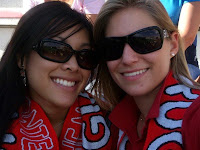 “Go Griffin!” Imagine hearing twenty thousand Perugia soccer fans roar this at once, then break out into one of the songs that honors the city’s soccer team and its mascot, the Griffin (symbol of Perugia since the 1200s). Though Perugia is no longer in the highest league (Seria A,) like the glory days of the ‘90s, the the team still has a huge and devoted following. For the last Perugia home game, Umbra Institute staff member (and program alum) Tyler Pace organized a group of sixty-two students to take part in Griffin-mania. The lively troup went down to the soccer stadium by bus and watched a great game against rival Crotone. The Griffin prevailed and students came away with new Perugian friends, bright red scarves, and a sense of belonging in this soccer-crazy city.
“Go Griffin!” Imagine hearing twenty thousand Perugia soccer fans roar this at once, then break out into one of the songs that honors the city’s soccer team and its mascot, the Griffin (symbol of Perugia since the 1200s). Though Perugia is no longer in the highest league (Seria A,) like the glory days of the ‘90s, the the team still has a huge and devoted following. For the last Perugia home game, Umbra Institute staff member (and program alum) Tyler Pace organized a group of sixty-two students to take part in Griffin-mania. The lively troup went down to the soccer stadium by bus and watched a great game against rival Crotone. The Griffin prevailed and students came away with new Perugian friends, bright red scarves, and a sense of belonging in this soccer-crazy city.
 “Go Griffin!” Imagine hearing twenty thousand Perugia soccer fans roar this at once, then break out into one of the songs that honors the city’s soccer team and its mascot, the Griffin (symbol of Perugia since the 1200s). Though Perugia is no longer in the highest league (Seria A,) like the glory days of the ‘90s, the the team still has a huge and devoted following. For the last Perugia home game, Umbra Institute staff member (and program alum) Tyler Pace organized a group of sixty-two students to take part in Griffin-mania. The lively troup went down to the soccer stadium by bus and watched a great game against rival Crotone. The Griffin prevailed and students came away with new Perugian friends, bright red scarves, and a sense of belonging in this soccer-crazy city.
“Go Griffin!” Imagine hearing twenty thousand Perugia soccer fans roar this at once, then break out into one of the songs that honors the city’s soccer team and its mascot, the Griffin (symbol of Perugia since the 1200s). Though Perugia is no longer in the highest league (Seria A,) like the glory days of the ‘90s, the the team still has a huge and devoted following. For the last Perugia home game, Umbra Institute staff member (and program alum) Tyler Pace organized a group of sixty-two students to take part in Griffin-mania. The lively troup went down to the soccer stadium by bus and watched a great game against rival Crotone. The Griffin prevailed and students came away with new Perugian friends, bright red scarves, and a sense of belonging in this soccer-crazy city.




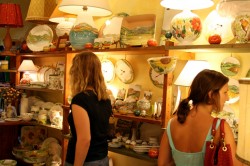
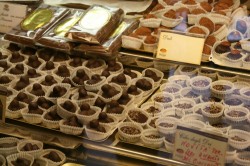
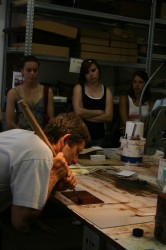
 Italy is a must-see destination for anyone who studied art history. A full third of UNESCO’s world artistic treasures is crammed into this peninsula, and for this reason guidebooks and tours in Italy focus on sculptures, paintings, frescoes, and the occasional Notable Building. But Italy (and Perugia in specific) is much more than simply artwork. Buried under mountains of commentary on vaults and brushstrokes are little stories and anecdotes that are not only amusing but also may help a student anchor a particular historical event in their head better than learning dates.
Italy is a must-see destination for anyone who studied art history. A full third of UNESCO’s world artistic treasures is crammed into this peninsula, and for this reason guidebooks and tours in Italy focus on sculptures, paintings, frescoes, and the occasional Notable Building. But Italy (and Perugia in specific) is much more than simply artwork. Buried under mountains of commentary on vaults and brushstrokes are little stories and anecdotes that are not only amusing but also may help a student anchor a particular historical event in their head better than learning dates.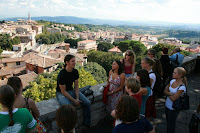 staff member Zach Nowak did his “Perugia Nooks and Crannies” tour with two groups of Umbra students. This guided walk around the center went down the main corso of the city but also ducked into the back allies, where Nowak showed students the former city orphanage with its revolving baby-leaving door. Students also heard about Perugia’s battle with the Pope in the Salt War, heard some not-often-recounted stories about Saint Francis, and found Perugia’s only remaining fascist symbols. An encore presentation of the tour will be held in several weeks.
staff member Zach Nowak did his “Perugia Nooks and Crannies” tour with two groups of Umbra students. This guided walk around the center went down the main corso of the city but also ducked into the back allies, where Nowak showed students the former city orphanage with its revolving baby-leaving door. Students also heard about Perugia’s battle with the Pope in the Salt War, heard some not-often-recounted stories about Saint Francis, and found Perugia’s only remaining fascist symbols. An encore presentation of the tour will be held in several weeks.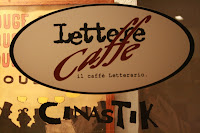






 the opportunity to introduce
the opportunity to introduce